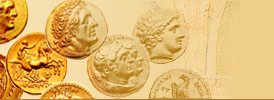Cortona Italy | Cortona, Italy is the quintessential Tuscan hill town now even more famous following the popularity of Frances Mayes' books about her life in Cortona and environs. The film of the book added to this even though much of it was filmed elsewhere. Cortona was founded by the Etruscans, who called it Curtun, and was also important during Roman times. It continued to flourish throughout the dark ages and during the Renaissance was a centre of early and enormous creativity. Masterpieces from this period, among them works by Fra Angelico, are displayed in the Diocesan Museum. The Palazzo Pretorio houses the Museo dell'Accademia Etrusca where Etruscan, Roman and Egyptian artifacts, as well as Mediaeval and Renaissance objects are on display. | The essence of Cortona’s architecture is mediaeval with steep narrow streets making there way up, down and across a steep hillside from which there is a magnificent view of the whole of the Valdichiana. From the Piazza Garibaldi (locally referred to as the Piazza Carbonaia) there is a panoramic view of Lago Trasimeno, scene of Hannibal's defeat of the Roman army in 217 BC. Parts of the Etruscan city wall are visible at the base of the current wall which also incorporates Roman and mediaeval elements. The main street, via Nazionale, is the only street in the town with no gradient, and is still usually referred to by locals by the older name of Ruga Piana, or "level street".
An antiques and flea market takes place in Cortona on the third weekend of every month, and once a year, in late August early September, the famous Cortonantiquaria, the Cortona Antiques Exhibition takes place, offering true collectors items for sale.
Worth a visit. More about Cortona, Italy.
| | Cortona Tourist Information |
|
|


